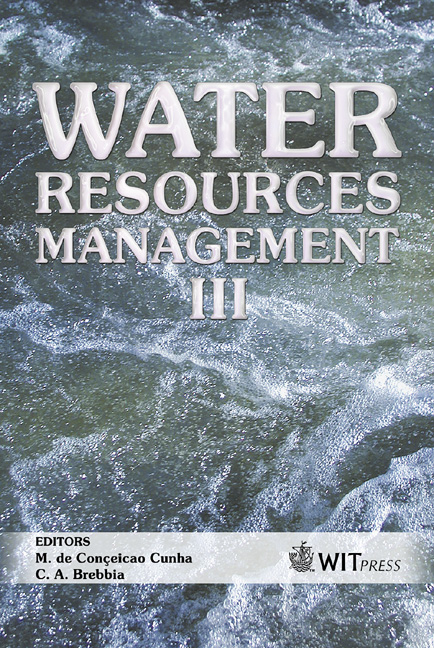Use Of The Graph Model For Conflict Resolution In Water Resources Problems In Brazil
Price
Free (open access)
Transaction
Volume
80
Pages
10
Published
2005
Size
440 kb
Paper DOI
10.2495/WRM050361
Copyright
WIT Press
Author(s)
V. de Fátima Malta, J. M. Damázio & P. C. de Magalhães
Abstract
This paper presents an application of the Graph Model for Conflict Resolution (GMCR), developed by Fang et al. [1], for water resources management problems in Brazil. The main aspects of the formal development of the GMCR model are described in terms of its basic components (decision makers, options, strategies and preferences), key concepts (stable states, equilibrium states and stability criteria), and mathematical representation of conflicts by sets of oriented graphs and payoff functions. The equations for the stability analysis of conflicts with at least two decision makers for different stability criteria are provided. The model is used to analyze the importance of the water management institutional system in the solution of a conflict over the use of the water in the Lima Campos/Orós system of reservoirs located in the Northeast of Brazil. Keywords: conflict analysis, water resources management, game theory, graph theory, Graph Model for Conflict Resolution (GMCR). 1 Introduction It is well known that the Brazilian territory is covered by several big rivers, and presents an average surface water production of approximately 250.000m3/s (the whole Europe produces around 100.000m3/s). In the Northeast of Brazil, the value of production of surface water is low, and even in the most humid areas long periods of shortage occur frequently. Despite its large amount of surface water, economic and social development in Brazil faces not only shortage of financial resources, but also problems due to multiple use of water (Malta et al. [2]).
Keywords
conflict analysis, water resources management, game theory, graphtheory, Graph Model for Conflict Resolution (GMCR).





